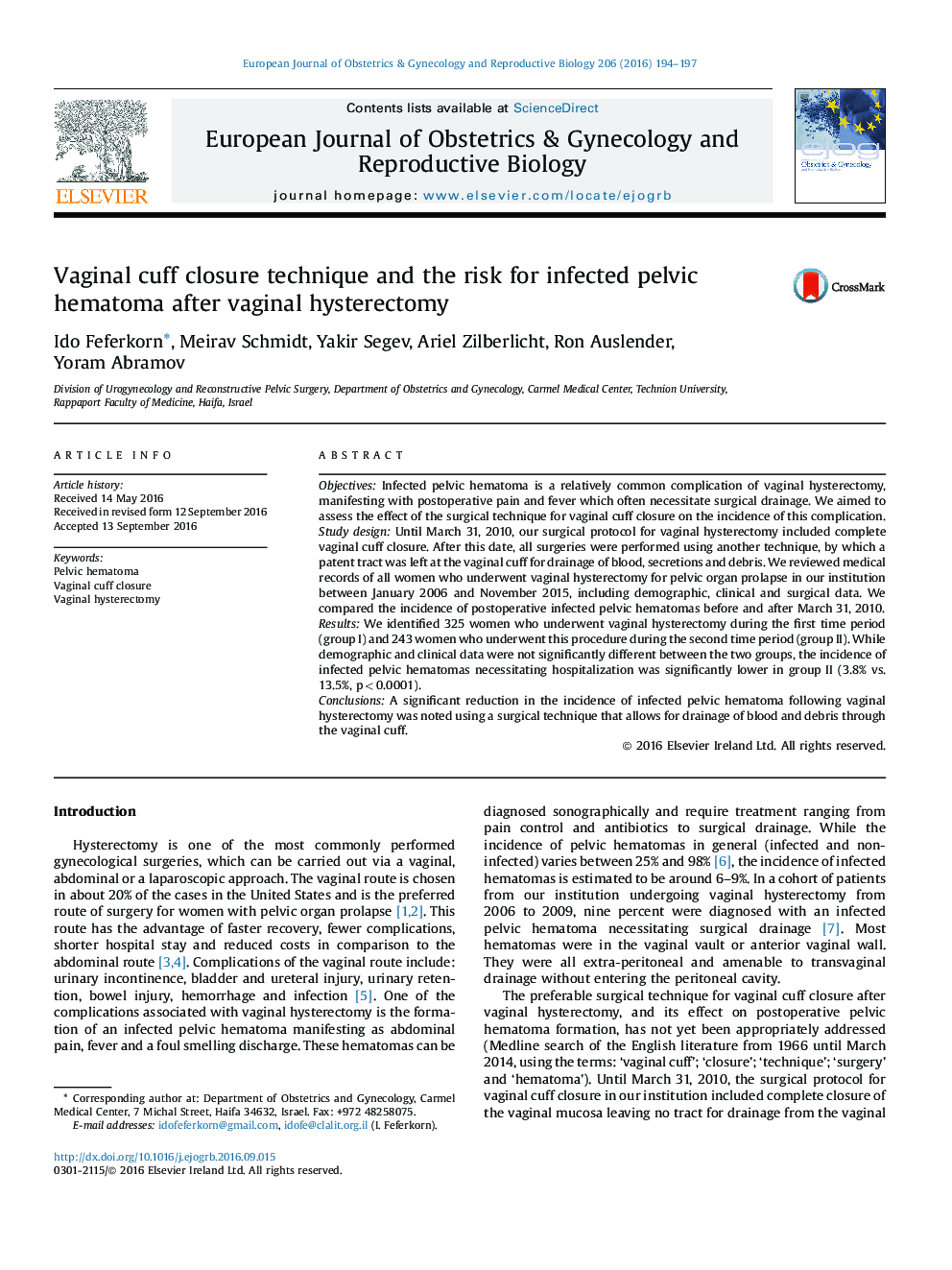| Article ID | Journal | Published Year | Pages | File Type |
|---|---|---|---|---|
| 6172451 | European Journal of Obstetrics & Gynecology and Reproductive Biology | 2016 | 4 Pages |
ObjectivesInfected pelvic hematoma is a relatively common complication of vaginal hysterectomy, manifesting with postoperative pain and fever which often necessitate surgical drainage. We aimed to assess the effect of the surgical technique for vaginal cuff closure on the incidence of this complication.Study designUntil March 31, 2010, our surgical protocol for vaginal hysterectomy included complete vaginal cuff closure. After this date, all surgeries were performed using another technique, by which a patent tract was left at the vaginal cuff for drainage of blood, secretions and debris. We reviewed medical records of all women who underwent vaginal hysterectomy for pelvic organ prolapse in our institution between January 2006 and November 2015, including demographic, clinical and surgical data. We compared the incidence of postoperative infected pelvic hematomas before and after March 31, 2010.ResultsWe identified 325 women who underwent vaginal hysterectomy during the first time period (group I) and 243 women who underwent this procedure during the second time period (group II). While demographic and clinical data were not significantly different between the two groups, the incidence of infected pelvic hematomas necessitating hospitalization was significantly lower in group II (3.8% vs. 13.5%, p < 0.0001).ConclusionsA significant reduction in the incidence of infected pelvic hematoma following vaginal hysterectomy was noted using a surgical technique that allows for drainage of blood and debris through the vaginal cuff.
